8+ Sample Event Staffing Plan
-
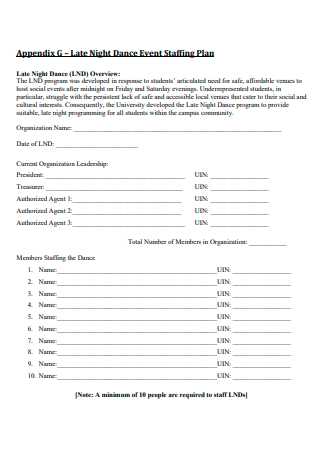
Dance Event Staffing Plan
download now -
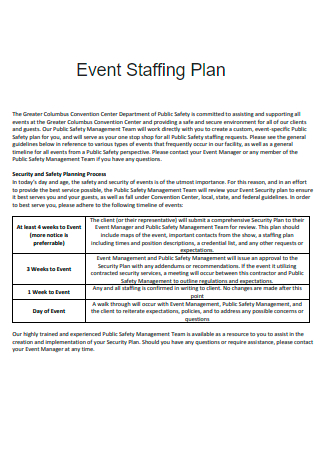
Basic Event Staffing Plan
download now -

Event Staffing Action Plan
download now -
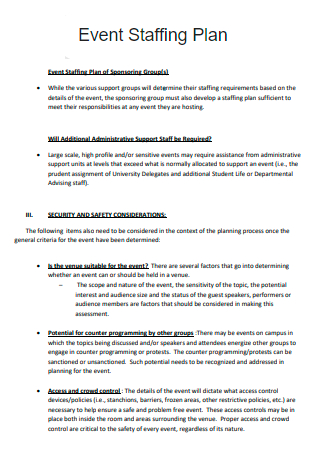
Event Staffing Plan Example
download now -
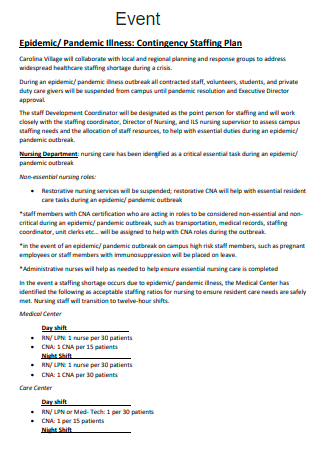
Event Contingency Staffing Plan
download now -
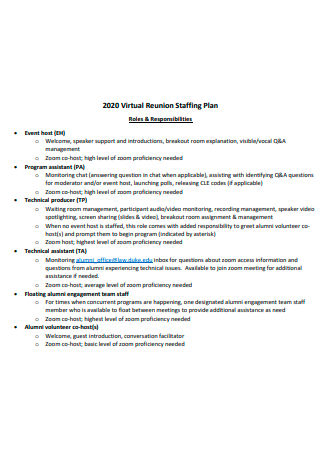
Virtual Reunion Event Staffing Plan
download now -
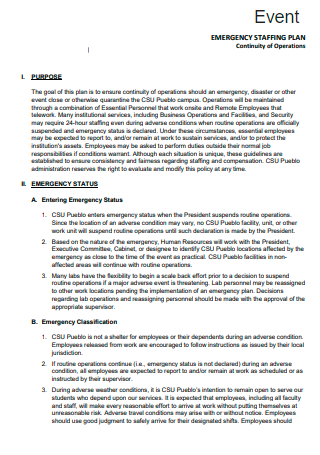
Emergency Event Staffing Plan
download now -
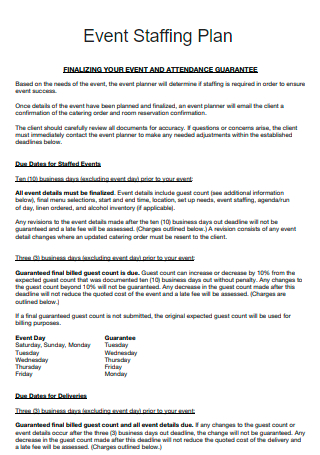
Event Staffing Plan in PDF
download now -
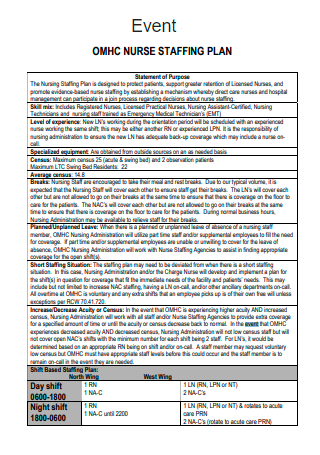
Nurse Event Staffing Plan
download now
FREE Event Staffing Plan s to Download
8+ Sample Event Staffing Plan
What Is an Event Staffing Plan?
Different Types of Staffing Plans
Consider These Points Before Hiring Event Staff
How to Write an Event Staffing Plan
FAQs
How many people do you need to staff an event?
What are the important aspects of staffing?
Why is it important to have a staffing plan?
What Is an Event Staffing Plan?
The practice of hiring qualified applicants for specific positions inside an organization or firm is known as staffing. Recruiting the right employees is only the beginning of your employment strategy. Onboarding, training, succession planning, employee satisfaction, and, ultimately, business development are all influenced by it. Through an event staffing business plan, you can come up with criteria as a means to follow through with the pre-event planning staffing process. You can avoid hiring staff that is unfit for the event and can instead, focus on finding ones that can positively contribute not only to the event but to their coworkers as well.
Different Types of Staffing Plans
A staffing plan is a well-thought-out roadmap for ensuring that your company is fully staffed in the long run, to prevent downtime or production loss due to retirement or another staff turnover. Staffing strategies differ from one company to the next, depending on the industry, the size of the company, the expected growth, and most of all the events necessary to have them. There is no one-size-fits-all solution for properly staffing your company, but with careful preparation and study, you can build a talent pipeline that is ready to fill gaps as they arise.
Consider These Points Before Hiring Event Staff
When planning an event, it’s important not to ignore the critical element of who will be on hand to help. The event’s crew has an impact on the overall experience. Finding the best employees, however, isn’t as simple as you may think. So, when you recruit workers for your next event, keep these crucial considerations in mind. Don’t think that you just have to fill the job positions in event planning, instead, you have to thoroughly see to it that they are the best ones for the task. One misjudged role may or may not ruin the event if they are not properly aware of their responsibilities.
How to Write an Event Staffing Plan
Recruiting and filling event staff positions takes time, so failing to plan ahead and then trying to hire someone when you need those talents yesterday can put you behind schedule. It will be much more difficult to hire employees in places where there are skills shortages. A strategic staffing plan considers the company’s event goals and the capabilities required to achieve those goals. A successful event planning team structure should go beyond headcount changes to identify the additional skills and knowledge your company needs while being mindful of the internal and external requirements.
Step 1: Set Goals and Strategy
It’s tough to ensure you have ideal staffing and employee development levels and to meet your goals if you don’t have a clear plan for where the business is heading, as well as measurable targets. As a human capital management specialist, you must collaborate with all departments of the company to build a vision for how your product or service will evolve and alter in five and 10 years. But particularly for the event, you have to keep in mind that everyone wants it to end up as a success. And that goes to say that ensuring that throughout the event, no mishaps occur.
Step 2: Analyze Your Current People Management Landscape
After you have created a strategy, you will need to assess your current people management scenario. You will need to know how long certain jobs take so you can figure out how many workers you will need in certain roles. One topic to consider is whether abilities are easily available and employable. If you want to receive an accurate view of your present workforce performance, you will need accurate data. Creating survey questionnaires to discover what your employees believe about their performance is one of the greatest ways to acquire access to essential data.
Step 3: Forecast Optimal Staffing Levels
Forecasting appropriate staffing levels takes into account not only how many personnel with specific talents you will need, but also how much money you will need to manage the event. If you don’t have enough money to engage full-time staff, contractors or freelancers may be an option. The trick is to arm yourself with as much internal and external data as possible. Predicting the future is impossible, but you may utilize facts to make your best guess. Examine your system’s past data to assist you to determine future workforce levels. Examine how past events have influenced staffing numbers and utilize that as a starting point for estimating future levels.
Step 4: Conduct a Gap Analysis
The final phase in building a staffing plan is to assess the areas where you currently lack the necessary capabilities to fulfill your objectives. This analysis considers not just the skills supply within your organization, but also the skills supply in the market, allowing you to decide whether to hire or upskill to address the gaps. You might discover that you have an excess of particular skills after you have analyzed your data. You can try to retrain workers with these abilities if possible, but if that isn’t possible, you may have to fire them.
FAQs
How many people do you need to staff an event?
The general rule of thumb is that a 10×10 booth should have at least two staff members, plus one for every 1,000 show visitors, or one for every 100 square feet of the booth area. There are various means to employ numerous staff for an event, be it contacting an employment agency or hiring a freelance or contractor for the event. All you need to remember is the budget given to you by the company. It should also be pointed out that an event should not be overstaffed as is it understaffed.
What are the important aspects of staffing?
These aspects include recruitment and selection, staff orientation, staff development, performance management, and separation. Employers use these efforts to ensure that employees succeed in their jobs and those job vacancies are kept to a minimum. When a company pays attention to its staffing plan, it can clearly define not just the number of personnel required, but also the mix of talents and experience required to do the job. A staffing model template can account for unforeseen circumstances such as low and high work volumes. It’s basically a simple human resources management goal that keeps your company on track.
Why is it important to have a staffing plan?
The goal of workforce planning is to help the company achieve its business objectives and strategy. The current and future staffing demands of the organization are affected by identifying the organization’s business strategy as the company’s mission and vision. This means, among other things, that small enterprises are doing a lot of hiring. It also means that if you haven’t already become a hiring expert, you will almost certainly have to do so in order to stay competitive in your area, develop your firm, and have a chance of competing with larger organizations for top talent.
During an event planning staffing agency, event management team members are involved. You can’t just hire staff for an event right away. There is due process involved and along with that is a careful selection to make sure they are adequate for the task you are employing them with. Now that you have gone through the article, you are more than ready to write an event staffing plan.
